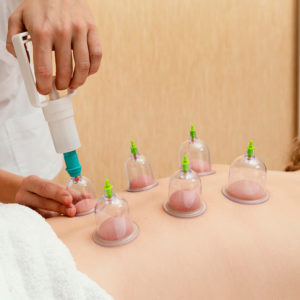 Cupping therapy is a traditional healing practice in which cups are placed on the skin to create suction, which is believed to improve circulation, reduce pain and muscle tension, and promote relaxation. While there is limited scientific evidence to support the efficacy of cupping, some people report relief from certain conditions such as back pain, headaches, and fibromyalgia after undergoing the therapy. However, more research is needed to fully understand the benefits and risks of cupping. It is important to note that cupping should only be performed by trained professionals and not at home without proper training.
Cupping therapy is a traditional healing practice in which cups are placed on the skin to create suction, which is believed to improve circulation, reduce pain and muscle tension, and promote relaxation. While there is limited scientific evidence to support the efficacy of cupping, some people report relief from certain conditions such as back pain, headaches, and fibromyalgia after undergoing the therapy. However, more research is needed to fully understand the benefits and risks of cupping. It is important to note that cupping should only be performed by trained professionals and not at home without proper training.
Pros and Cons of Cupping Therapy
Pros of Cupping Therapy:
Relieves muscle tension: Cupping is believed to increase circulation and help relax tight muscles, reducing pain and discomfort.
Improves overall well-being: Some people report feeling relaxed and rejuvenated after cupping therapy, which can lead to improved overall well-being.
Non-invasive: Cupping therapy is a non-invasive form of treatment, making it a good alternative for those who cannot or do not want to undergo more invasive treatments.
Cons of Cupping Therapy:
Limited scientific evidence: There is limited scientific evidence to support the efficacy of cupping therapy.
Risks of skin injury: Cupping can cause bruising and other types of skin injuries, which can be painful and take time to heal.
Lack of standardization: There is a lack of standardization in cupping therapy, with different practitioners using different techniques and equipment, which can affect the quality and consistency of the treatment.
Possible side effects: Some people may experience dizziness, fainting, or other side effects after undergoing cupping therapy, especially if they have underlying health conditions.
It is important to consult with a healthcare professional before undergoing cupping therapy to determine if it is appropriate and safe for you.
